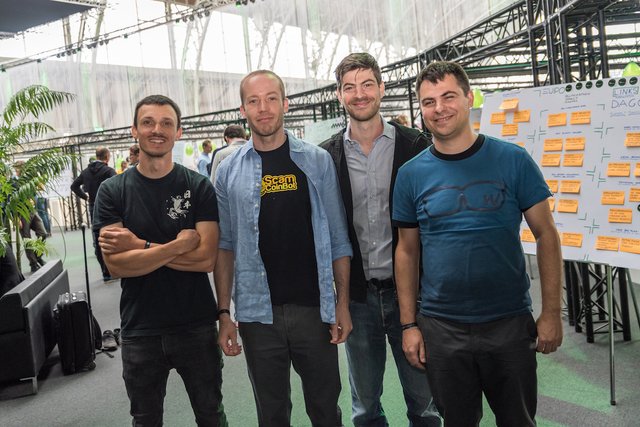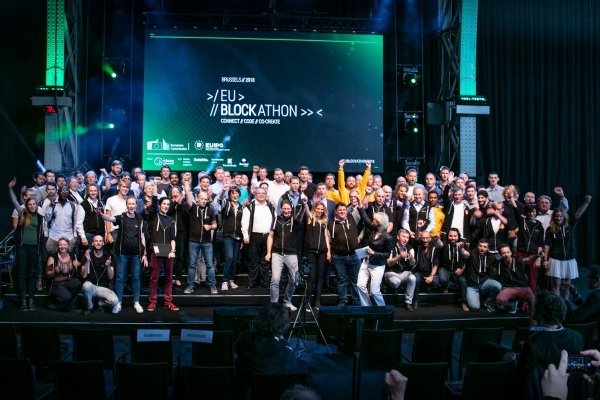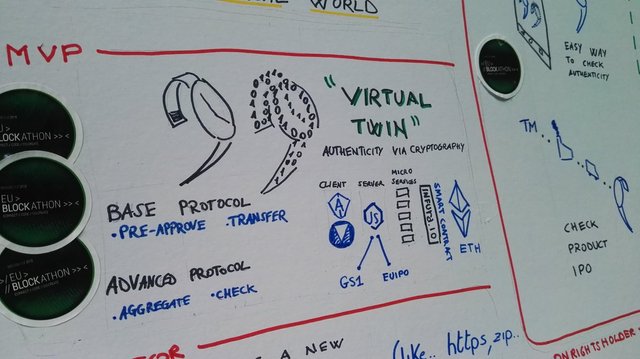

One of the most interesting things about Blockchain is that is invariable. You only can change something on it if you are able to break complex logarithms — not exactly kid’s stuff!
Its incredible property of having so high levels of traceability and security assures the maximum safety possible at the present time by providing trust in every kind of eco-systems: governmental, financial, health, logistic, energy..so why not intellectual property?
This is probably what EUIPO, the European Union Intellectual Property Office, had in mind when it convened EUBlockathon, the first ever anti-counterfeiting hackaton, which took place last month at the Autoworld museum of Brussels, where eleven international teams spent an entire weekend to first learn from experts and then deliver a solution with a prototype able to use the potential of blockchain to create an integrated solution to combat fake goods.

A hard nut to crack in a country where, each year, a 5% of the goods produced are counterfeit: a loss of 60 billion euros each year in 13 key economic sectors, approximately 7.5 percent of total sales, equating to 116 euros per EU citizen per year, according to the same EUIPO.
“The EU Blockathon springs from the idea that blockchain technologies have great potential in the fight against intellectual property rights infringement,” said António Campinos EUIPO Executive Director. “The solutions developed here by these bright groups of coders will, hopefully, have a part to play in that fight, as we work to try to stop counterfeiting both online and offline.”
The best solution to the issue has been found by the Italian team Cryptomice, which scooped a 25,000 euros prize for its “virtual twin” method of physical verification. “The amazing property of the blockchain is that it is immutable and you can prove mathematically that something is unique, so even if it is possible to clone an object in the real world, it is impossible to clone the blockchain twin” explained to the press Thomas Rossi, head of the team.
The winning team’s solution involved the creation of a virtual twin of a product that will have the same serial number (taken from GS1) of the physical product and will be registered on the blockchain. Only the virtual twin — which cannot be cloned or falsified — together with the physical product can confirm the authenticity of the product, so if the twin is absent the product is not authentic. The key concept is that fakes are created because there is a market for them, but if the product cannot be sold, nobody is going to clone it: and, as it is impossible to clone the blockchain twin — ehy, it’s mathematics! — thus it will be impossible to clone an object in the real world.

“In the real world we cannot be so naive, so we have introduced the concept of “chain of holdership” (hodlership for crypto aficionados out there), — says Rossi -every time the virtual twin changes holder the past holders are recorded on the blockchain. When someone, say “Trucking company A”, steals the real good, the next person in the chain presses a warning button which makes that line of holders red. “Trucking company A” steals again for other goods and in time you will see a lot of red lines crossing over “Trucking company A”. Pushing the alert button means that the virtual twin has arrived, but the physical good is wrong or missing. The number of red lines crossing over an entity is a warning indicator that can be used by customs and logistics operators. In particular, you can take decisions about a cargo “before” the cargo arrives by checking the chain of holders and requiring that the current owner can transfer to you the virtual twin. The incentive for someone to push the alert button is that, if he doesn’t, someone down the line will push it and red lines will be passing also over him.”

Cryptomice also awarded the second spot in the “customs” categories, sharing it with The Pirate Busters team, another QR code-based platform that also incorporated near-field communication (NFC) technology in addition to blockchain. Their project, called TrustTrack, uses QR codes at the individual pack level and NFC and a tamper-evident seal for shipping cartons: this can assure intact shipments to be fast-tracked through customs, freeing up resources, and could also incorporate a reward scheme to incentivize consumer authentications.
The EU Blockathon, that coincided with the signing of a MoU on Online Advertising and Intellectual Property Rights aimed at minimizing adverts which are known to infringe copyright or disseminate counterfeit goods, categories “consumers” and “customs”, which were won by team Fides for its Good chain solution, which combines unique QR codes and blockchain and links the entire process to a donation system for social causes, as well as providing product authentication.
When applying the QR code to a product, the brand makes a pledge for a certain number of “impact points” in relation to a social cause. Along the supply chain, certification bodies will check that the authentic product is moving through the chain and confirm this with a certificate which will allow customs to fast-track the goods through the system. When scanning the purchased product, the consumer can scan the code and donate the impact point to the social cause, triggering a donation from the brand owner.
The team, that has already received good feedback from brand owners and partners, thinks the solution is particularly useful for small companies and is currently waiting to receive offers from brands of luxury goods, packaging, logistics and other companies for a pilot project.